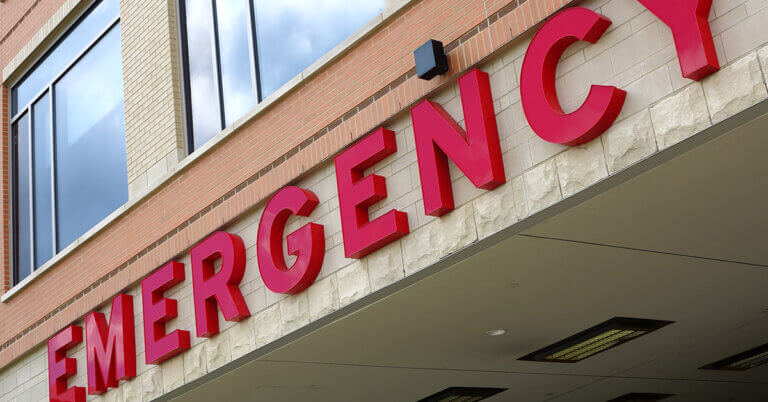January 23, 2017

Letting Go: Steward Sells Its Hospitals and Embraces Patient-Centric Care
Last September, Massachusetts-based Steward Health Care System announced that it would sell its 9 hospitals to Alabama-based Medical Properties Trust (MPT) for $1.2 billion in a 15-year sale-leaseback transaction with optional renewals thereafter. Steward intends to recapitalize the company, further invest in its vertically-integrated business model and expand into new markets.
This is quite an achievement for a company that could not give its hospitals away a decade ago. Underlying the company’s turnaround is a profound shift in perspective regarding a health system’s ownership structure, operating profile and growth strategies.
As an “asset-light” patient-centric health company, Steward is well-positioned to compete in a post-reform competitive environment that rewards better outcomes, more efficient care delivery and an enhanced customer

Darkness Before Dawn
In 2008 Dr. Ralph de la Torre became the 4th CEO in 6 years at Caritas Christi Health Care. Caritas Christi was a 6-hospital not-for-profit Catholic healthcare system serving eastern Massachusetts, southern New Hampshire and Rhode Island. Established in 1985 with over 12,000 employees, Caritas Christi was New England’s 2nd largest healthcare system.
As de la Torre took the reins, Caritas Christi was in dire straits. In addition to substantial operating losses, the system was experiencing significant decreases in patient volume, needed sizable capital investment for facility modernization, had a large unfunded pension liability and was losing affiliated physicians to competing facilities.
To salvage the system, the Archdiocese of Boston encouraged national Catholic health systems to acquire Caritas Christi at essentially no cost. None stepped forward.
Moreover, the Commonwealth of Massachusetts had just enacted comprehensive healthcare coverage and payment reform under Governor Mitt Romney. Caritas Christi’s already competitive marketplace now confronted increased uncertainty as Massachusetts implemented “Romneycare.”
Dr. de la Torre was the founder and CEO of the Cardiovascular Institute at Beth Israel Deaconess Medical Center (BIDMC) and of Cardiovascular Management Associates, one of the nation’s first totally integrated systems for treating cardiac patients. He also was Chief of Cardiac Surgery at BIDMC, a Harvard Medical Faculty Physician and owner of numerous patents.
As a surgeon, engineer and evangelist for integrated delivery, de la Torre knew that more of the same would not solve Caritas Christi’s strategic and operating dilemmas. He decided to reposition the health system as a vertically-integrated provider. He wanted engaged Caritas Christi physicians to care for their patients without hesitation or institutional obstacles.
But first things first. Caritas Christi needed to stabilize operations and access capital.

Steward 1.0: Private Equity and the Post-Reform Health System
De la Torre inherited a traditional “horizontal” not-for-profit hospital operating company. It delivered acute-care services and did little to coordinate either primary or post-acute care. In de la Torre’s worldview, the narrow acute-care focus was inefficient and generated sub-optimal patient outcomes.
Historically, investment banks advising not-for-profit health systems have generated facility investment funding through tax-exempt bond issuance. While lower cost, tax-exempt bonds have significant “use limitations” that preclude their funding non-facility investments.
Caritas Christi needed capital not only to improve facilities, but also to develop a vertically-integrated care delivery platform. This required a robust primary care network with aligned technologies to manage patients’ whole care experience. Despite this, Caritas Christi’s previous investment bankers focused on restructuring the company’s debt with tax-exempt bonds.
The bankers reasoned this approach would lower overall debt costs and provide incremental capital for facility improvement. However, de la Torre needed greater capital structure flexibility to build the vertically-integrated operating model he envisioned for Caritas Christi.
Working with Cain Brothers, Caritas Christi explored private equity funding alternatives. They chose to partner with Cerberus Capital Management and become a for-profit hospital company under the name of Steward Health Care.
Although private equity sponsors had previously invested in for-profit hospital companies, this was the first private equity acquisition of an entire not-for-profit health system to create a standalone “platform”.
The $895 million transaction required approvals from the Archdiocese of Boston, the Massachusetts Attorney General’s Office, the Department of Public Health, the State Supreme Court and the Vatican. Interestingly, the Vatican was the first to sign-off on the transaction.
The church and state approvals came with several “strings” attached. Steward agreed to do the following:
- operate under the Catholic Church’s Religious and Ethical Directives;
- maintain current residency and teaching programs;
- maintain current number of inpatient psychiatric and detoxification beds;
- maintain current, and already high, levels of charity care and community benefits;
- maintain current employment and compensation levels;
- fund a 5-year assessment and monitoring program by the state;
- not undertake either an IPO or dividend recapitalization for 3 years; and
- not sell/close any hospitals for 3 years.
To the delight of local and state officials, for-profit Steward would pay all applicable local, state and federal taxes.
Steward used approximately $830 million to restructure its debt, assume existing pension obligations, provide adequate working capital and fund $400 million in new capital projects, including facility upgrades at all 6 Caritas Christi hospitals.
In de la Torre’s words, “Steward was founded as a business plan for vertically-integrated healthcare delivery and Caritas Christi became its first acquisition.” De la Torre and his team set to the task of reinventing Steward as “an integrated community-based Accountable Care Organization.”
Steward invested heavily in its accountable care organization (ACO) and experienced a substantial reduction in patient mortality, achieved higher quality scores and implemented expansive evidenced-based care protocols. It has expanded to 9 hospitals with 3,000 doctors and 17,000 employees serving 180 communities.
In de la Torre’s words, Steward has become “a glorified managed care” company. It strives for global capitated payments with upside reward for achieving high-quality outcomes. Empowered primary care physicians “own their patients” and quarterback their care.
Independent physicians are tightly affiliated within the Steward delivery network. They’re “more franchise than affiliate.” Physicians “play by the rules and focus on total care costs, not maximizing treatment volumes and revenues.”
The investments have paid off. Steward became profitable in 2015. This set the stage for the the $1.2 billion MPT transaction and positions the company to expand nationally into other markets.

Steward 2.0: Asset-Light and Ready
Steward will use the new funding to eliminate $400 million in debt, repay its private equity sponsor’s (Cerberus) initial investment and fund $100 million in capital improvements at existing facilities over 3 years.
As part of the transaction, Steward’s management team will acquire a greater ownership percentage in the company. MPT also invested $50 million for a 4.9% ownership stake in Steward and has agreed to fund up to $1 billion in future Steward acquisitions.
In essence, Steward is converting itself into a pure healthcare operating company. Its principal assets will become its brand and business model. In this regard, Steward is following the hospitality industry’s well-established practices regarding facility ownership and operations.
Major hotel chains rarely own their facilities. They lease properties from real estate companies. They realized a long time ago that buildings are not the key to their success. Instead, customer relationships are the true foundation of their success.
Marriott, Hyatt, Hilton and other hotel chains are “asset-light.” They compete based on their brands, services, customer experience, loyalty programs and market positioning. As healthcare becomes more consumer-oriented, health systems must develop equally-strong brand loyalty and customer relationships.
An operating-company business is customer-centric. It affords greater flexibility to respond to market dynamics without the heavy burden of facility ownership. It facilitates customer connection.
Recognizing this reality, Steward has revamped its digital and mobile platforms to ease, customize and personalize patient/customer communication. Steward’s previous website had over 2,000 pages of content, 85% of which customers never accessed.
Customers want easy, mobile-friendly “solutions” for making appointments, getting directions and finding physicians. Steward listened and delivered. The new platform mimics digital media for major on-line retailers like Amazon and Airbnb. Mobile traffic is skyrocketing.
The MPT transaction is the latest stage in Steward’s value-focused journey. Once an under-performing hospital-centric health system with limited capital access, Steward has become a dynamic for-profit healthcare company with a nationally-recognized ACO and expansive capital access. It’s time to grow the company’s footprint outside New England.
In a Boston Globe interview (Sept. 26, 2016), de la Torre stressed that Steward “will seek partners with a focus on wellness and prevention services.” In this way, Steward plans to align its products, services and delivery with customers’ need for better and more convenient care delivery.
Giving customers the services they want is a recipe for success in any business. To a large extent, healthcare providers execute transactions without customers. Patients do what providers instruct and third-parties pay for the treatments.
As healthcare shifts toward value-based payments and consumerism, de la Torre believes health systems that do not engage and align with their patients/customers risk losing market relevance. This is particularly true given America’s oversupply of acute care facilities.

Addition By Subtraction
Great healthcare is not buildings and fragmented treatment provision that optimizes reimbursement revenues. Great healthcare is holistic, integrated care that delivers services customers need and want on their terms.
The healthcare industry confronts a dynamic and disruptive operating environment. Facility ownership can cement high operating costs into health system business models and limit strategic flexibility. Becoming “asset-light” creates opportunities for pursuing lower-cost, customer-friendly care management.
It’s always advantageous to “sell high.” For the time being, the marketplace is paying health systems well for reducing their facility-ownership risk and increasing their strategic flexibility. This will not continue indefinitely.
As demand for healthcare services continues to become more price-sensitive and payers refuse to reimburse unnecessary and/or avoidable treatments, the burden of operating “asset-heavy” business models will become apparent for those that are not highly efficient. The value of acute care facilities for operators will diminish for certain operators.
Forward-thinking health systems, like Steward, are pursuing innovative financial and operating strategies, such as selling hospitals to generate incremental cash for investment in the holistic, integrated and value-driven care services. Steward’s leadership team is looking beyond the horizon to a market environment where being “asset-light” helps the company create a competitive advantage.
Pursuing asset-light business models requires courageous leadership to overcome deep-seated biases that historically and instinctively favor facility ownership and operational control. The future belongs to healthcare companies that can embrace patient-centric care, whether in hospitals, physician offices, or other outpatient “asset light” clinic settings. These companies will win by providing the right care at the right time in the right places at the right prices.
CO-AUTHOR
ROBERT J. FRAIMAN, JR.
 Robert Fraiman has been President and CEO of the Firm since January 2010. As an investment banker with over 30 years’ experience, he has advised clients in mergers & acquisitions, debt and equity capital rising, and strategic growth initiatives.
Robert Fraiman has been President and CEO of the Firm since January 2010. As an investment banker with over 30 years’ experience, he has advised clients in mergers & acquisitions, debt and equity capital rising, and strategic growth initiatives.
Cain Brothers is a pre-eminent investment bank focused exclusively on healthcare. Our deep knowledge of the industry enables us to provide unique perspectives to our clients and is matched with the knowhow needed to efficiently execute the most complex transactions of all sizes. www.cainbrothers.com





